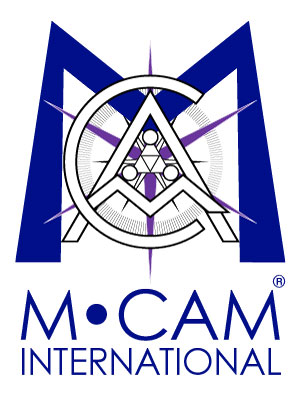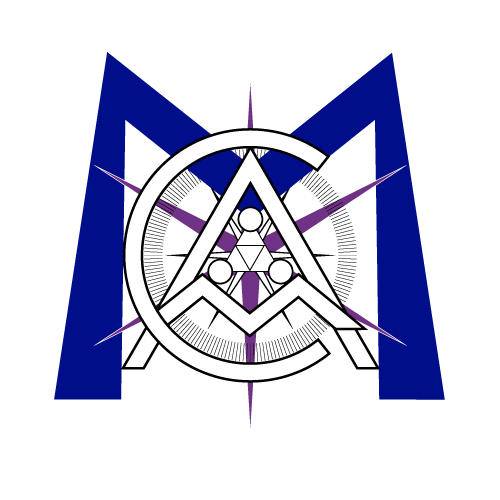Bioinvestment Showcase: Increasing Industry Insight
Date: Wed, 2002-02-27
David E. Martin to speak to the Economics Club of Hampton Roads
Date: Wed, 2001-12-26
December 27, 2001 David E. Martin, CEO of M·CAM, Inc. — the Charlottesville, VA, based leader in the field of providing a mechanism for lenders to use intellectual property and intangible assets as collateral for lending — will speak at the May 4 meeting of the Economics Club of Hampton Roads. M·CAM is focused on: enabling companies to leverage their IP/IA portfolios to access smart capital, and creating liquid markets for Intellectual Property. The luncheon is being held from noon-1:30 p.m. at the Sheraton Waterside Hotel in Norfolk, VA.
The Knowledge Economy and a Cross of Gold (pdf)
Date: Tue, 2001-10-02
M·CAM CEO Interviewed on Tomorrow’s Business Radio Show with Steve Mandell
Date: Mon, 2001-08-20
The Problems with Patents and the Impact on the Investing Public (pdf)
Date: Mon, 2001-07-23
June Conference Will Examine Legal Issues in Financing High-Tech Companies
Date: Thu, 2001-05-31
May, 2000 For many internet and high-tech companies, their most valuable assets are copyrights, patents and other intellectual properties. A two-day conference set for June 15-16, 2000 at the DoubleTree Hotel in Portland will examine legal issues involved in valuing a company
M·CAM’s CEO testifies at U.S. House hearing on Patents
Date: Thu, 2001-05-10
May 10, 2001 Rayburn House Office Building Testimony of Dr. David Martin, CEO, M·CAM Inc. I would like to thank you and your distinguished colleagues on the Judiciary Committee for giving me an opportunity to address the topic of patent quality in the United States. While once deemed badges of intellectual honor, patents have become the currency of the U.S. and global economies. Echoing the debates over a currency standard 100 years ago the United States Congress now faces an issue much more challenging than a decision on gold or silver. The basis of our economy, no longer tangible metals, is now the national product of the human mind – innovation. The protection of this precious asset is the basis for the intellectual property laws of the United States and the developed world. However, in the past decade we have seen the erosion of confidence in patents. While many conveniently dismiss this as inevitable because that which is intangible cannot be measured, I will provide evidence that confidence is evaporating because the assets are indefensible due to egregious inadequacies in patent prosecution and examination. In January 2001, on a single trading day, one U.S. company and its investors lost over $330,000,000[1] as a result of misappropriated reliance on U.S. Patents. The patents that Transkaryotic Therapies Inc (TKTX) owned had significant deficiencies in uncited prior art which were overlooked in prosecution and examination. Relying on uninformed patent advice and confidence afforded by questionable patents, they challenged the validity of patents held by Amgen and lost. Our company, using our web-based patent examination system published a projected outcome of this case in November 2000 before anyone in the securities industry or in the courts would commit to the probable direction of the decision. Careful examination of the protected intellectual property in this case show that the TKT deficiency was avoidable had the U.S. Patent Office thoroughly examined prior art. The whole of USPTO
Intellectual Property — Restructuring the Economy
Date: Mon, 2001-04-16
Patent Cafe Monday, April 16, 2001 M·CAM was founded to bring order to the chaos of the knowledge economy. Having inadequate systems to assess ownership, insufficient models to assess value, and incongruent policies to ensure protection of intellectual property, the world
Protection of patents vital for new economy
Date: Sat, 2001-04-14
By: Zeng Min China Daily, Page 2 April 14-15, 2001 Trapped by a lax attitude towards patent protection, Chinese companies and institutions are being urged to strengthen patent applications and protection overseas so that they can compete more effectively on the global stage. Experts on intellectual property rights yesterday said doing nothing to solve the problem will limit the expansion of the vitally important knowledge-based economy. They said it is time for more awareness of patenting as China is expected to enter the World Trade Organization (WTO) later this year, which will commit it to global rules, including the protection of intellectual property rights. “That will put Chinese firms in the hot seat,” said Wen Xikai, a senior research fellow a the State Intellectual Property Office. Wen said Chinese firms must develop cutting-edge technologies and patent them at home and abroad without delay. “Otherwise, they will have to use outdated technologies developed by foreign firms to avoid violating global laws on the intellectual property rights after we join the WTO,” said Wen. “Picking up the leftovers will put them at a disadvantage in the global market.” In the last decade, Chinese enterprises have applied for more than 4,000 patents in 32 countries and regions worldwide, and 2,400 of them have been granted, official statistics said. However, China currently owns less than 5 per cent of global patents, said David Martin, president and chief executive officer of the US-based M·CAM Co, which specializes in patent protection. “This figure is too small for a country like China, which has thousands of years of history and has long been a major force of innovation,” said Martin. A lack of awareness about patenting new inventions abroad is mainly to blame, said Guo Shoukang, a professor of intellectual property rights protection at the Law School of the Renmin University of China. Although China received more than 170,000 patent applications last year, Wen said about 60 per cent were from foreign companies. Meanwhile, many Chinese firms who apply for patents in foreign countries are related to updated designs of original products rather than completely new breakthroughs, said Wen. However, some of China’s large industrial groups, including the China Petrochemical Corporation (SINOPEC), an oil giant that ranked 58th on the Fortune Global 500 list in 1999, and the Haier Group, a home appliances giant, have upped the stakes. At present, SINOPEC has filed nearly 500 patent applications in 32 foreign countries and owns more than 2,900 domestic and foreign patents.
IPR protection urgent
Date: Fri, 2001-04-13
China Business Times April 13, 2001 According to the President and CEO of America’s M·CAM Co., many technologies developed in China are patented by other country’s companies, causing losses for China equal to about $1b. China will face increased trade barriers after entering WTO, so protecting IPR is crucial.
M·CAM CEO Advocates for Chinese Patent Quality Initiatives at National Conference
Date: Thu, 2001-04-12
Intellectual Property Protects China’s Traditional Cultural Heritage
Date: Thu, 2001-04-12
People’s Daily April 12, 2001 Ancient Chinese history recorded some of the greatest inventions in the world at that time. Now, in the age of globalization the patent system needs to be used to protect China’s traditional cultural heritage. An international seminar on the “Application and Protection of Intellectual Property” was held here Wednesday. Experts from home and abroad held that strengthening the intellectual property rights system is urgently required in China, in order to promote traditional Chinese culture and explore its potential value. Experts pointed out that intellectual property has become a new form of currency in world trade. It is now vital to control intellectual property on technological, biomedical and production processes — more vital than controlling the physical means of production itself. Pharmaceutical companies in the United States and Europe are obtaining patents at the rate of thousands each year. The materials and methods of Traditional Chinese Medicine (TCM) are of great interest to these companies. A complete survey and analysis of the components of TCM and its modern development would be sensible. The purpose of such a survey would be to identify and create patents on irreplaceable medical technology before it becomes widely applied elsewhere. Japanese interests expropriated a unique cloisonne production method from its Chinese home. The method had no patent protection in China or elsewhere, and its cultural and economic value to China has greatly diminished. Japanese business subsequently filed patents restricting China’s ability to enjoy the economic value of its own assets. Treatment that evolves from traditional methods and unique techniques should be considered as an important contribution to national economic and social progress and should be protected by patents. “Imagine if the science of acupuncture, which has been widely adopted worldwide, was subject to intellectual property control by China. Now extend that image to other methods and products of Chinese inventions. One quickly can see the potential size of the markets involved, in every technology sector,” said David J. Pratt, vice president of the M·CAM Company in America. A Chinese official said, China has for a long time had the largest numbers of scientists, mathematicians, and engineers in the world. Add to that the practitioners of TCM, the scholars, craftsmen, artisans and businesspersons in all fields. Clearly, there is an immense national heritage to protect and defend. China passed through its first Patent Law in 1984, and revised it last year. In past years, the Chinese patent system has protected unique cultural items from inappropriate exploitation on world markets. Up to now, a group of high and new technology enterprises with independent intellectual property and competitive abilities have been available through technological renovation works dominated with patent achievement. The famous Haier Group has conducted the most patent applications among the enterprises in China during the subsequent years.

